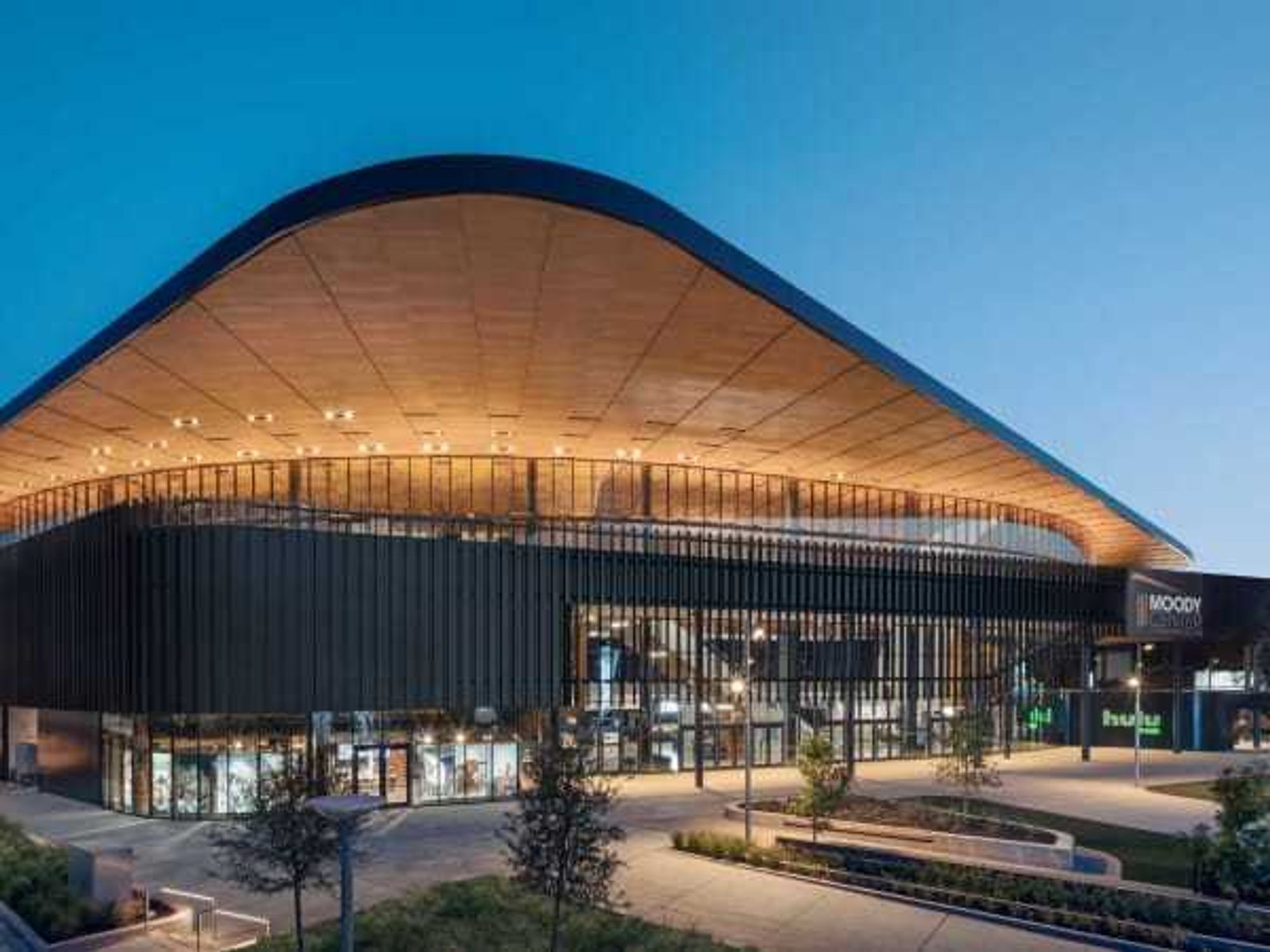Austin's core arena, Moody Center, has ranked as the highest-grossing venue of its size in the world, according to Billboard's calculations. This is the second year in a row that Moody Center was at the top of the list; it was briefly pushed into the No. 2 spot by Dickies Arena in Fort Worth in 2023.
Moody Center, with 15,000 seats, was compared to others with a capacity between 10,001 and 15,000, making Moody Center as big as any in its league.
It's an annual comparison for the entertainment magazine, wrapped up in its other year-end charts including the Hot 100 chart for songs ("Die With A Smile" by Lady Gaga and Bruno Mars was No. 1) and the Billboard 200 for albums (The Life Of A Showgirl by Taylor Swift).
According to the venues chart, Moody Center grossed $89.8 million from October 1, 2024, to September 30, 2025. It hosted 854,000 paying visitors, across 94 shows. That means each show averaged about $955,300. However, a press release from Oak View Group, which manages Moody Center, counted 140 ticketed events this year, not including home games for the University of Texas basketball teams. It is possible that Billboard only counted concerts.
“This milestone is a testament to the incredible music fans who continue to show up in record numbers," said Moody Center general manager and Oak View Group Austin president Jeff Nickler in the release. "Along with our loyal regional audience, our data shows that fans from all over the country are choosing to travel to Austin to see their favorite artists at Moody Center.”
As Austin's main venue for big-name performers, Moody Center has hosted lots of notable shows this year, including Billie Eilish, Ariana Grande, Charli XCX, Phish, Mumford and Sons, Alabama Shakes, Ice Cube, Lainey Wilson, and many more. Still coming in 2026, concertgoers can look forward to seeing Lady Gaga, Doja Cat, Florence and the Machine, Demi Lovato, Nine Inch Nails, Louis Tomlinson, The Neighbourhood, Twice, and others.
Moody Center was also the center of a high-profile, but niche scandal this year, as Oak View Group's co-founder and former CEO Tim Leiweke was indicted in a bid rigging scheme from the venue's early days. Leiweke allegedly made a deal with another CEO to trade future subcontracting deals from Oak View in exchange for the competing company rescinding its bid to manage and develop the arena. President Donald Trump pardoned Leiweke in December, five months after the indictment.
Moody Center was not the only Texas venue to make the Billboard list, which was dominated by the Lone Star State. American Airlines Center in Dallas and Dickie's Arena in Fort Worth were No. 5 and 6, respectively. Then two venues in Houston, NRG Stadium and Toyota Center, were No. 9 and 10.
The highest-grossing venue in the world of any size was The Sphere in Las Vegas, Nevada, thanks to its high ticket prices. It grossed $420.5 million, which was significantly more than the runner-up, Madison Square Garden in New York ($294.8 million gross).
Billboard list of highest-grossing venues in 2025 with capacities of 10,001-15,000:
- Moody Center — Austin, TX — $89.8M
- OVO Hydro — Glasgow, Scotland — $89.6M
- Mercedes-Benz Stadium — Atlanta, GA — $89.2M
- Hallenstadion — Zurich, Switzerland — $82.8M
- American Airlines Center — Dallas, TX — $76.7M
- Dickies Arena — Fort Worth, TX — $74.3M
- Bridgestone Arena — Nashville — $73.7M
- Co-Op Live — Manchester, England — $73.6M
- NRG Stadium — Houston, TX — $71.6M
- Toyota Center — Houston, TX — $56.5M


